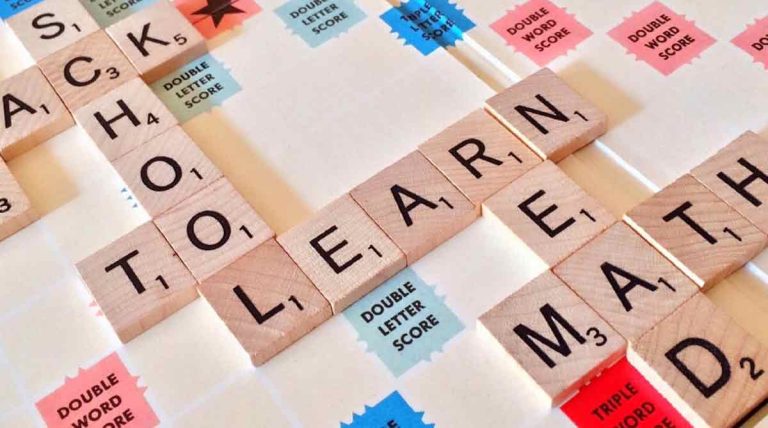Paragraph on My Favourite Game Badminton
Badminton is a sport that has captured the hearts of many, including mine. It’s a game that combines speed, strategy, and skill, making it both challenging and exhilarating. Whether playing casually with friends or in a competitive setting, badminton offers endless enjoyment and keeps players on their toes. The thrill of the game lies in its simplicity—a racket, a shuttlecock, and the desire to outmaneuver your opponent.
In the following Paragraph on My Favourite Game Badminton, I will share why this sport holds such a special place in my life, highlighting the aspects that make it my favorite game.
1. Paragraph on My Favourite Game Badminton (100 Words)
Badminton is my favorite game because it is fast-paced, fun, and requires both physical and mental agility. Played with a lightweight racket and a shuttlecock, badminton tests your reflexes and coordination in every match. I enjoy the challenge of outmaneuvering my opponent, anticipating their moves, and delivering the perfect shot.
Whether I’m playing singles or doubles, the game always keeps me on my toes, pushing me to improve my skills. The outdoor setting adds an extra layer of excitement, as wind and weather can influence the shuttlecock’s direction, making each game a unique experience. Badminton truly excites me.
2. Paragraph on My Favourite Game Badminton (150 Words)
Badminton is more than just a game to me; it is a passion that keeps me physically fit and mentally sharp. The sport demands a combination of agility, quick reflexes, and strategic thinking, which makes each match both challenging and exhilarating. Whether I’m playing casually with friends or competing in a more intense match, I find immense joy in the rapid pace of the rallies and the satisfaction of landing a perfect shot.
The simplicity of badminton, with just a racket and shuttlecock, contrasts with the depth of techniques and strategies one can employ during the game. I appreciate how badminton not only keeps me active but also sharpens my decision-making abilities under pressure. The thrill of a powerful smash or a well-placed drop shot makes every game exciting, and that’s why badminton holds such a special place in my heart.
3. Paragraph on My Favourite Game Badminton (200 Words)
Badminton is my favorite game because it offers a perfect blend of physical activity, mental strategy, and pure enjoyment. I first discovered badminton as a child, and it quickly became an essential part of my life. The game is fast-paced and requires quick thinking, sharp reflexes, and excellent hand-eye coordination.
Every match is a test of endurance and skill, pushing me to stay fit and continuously improve my technique. One of the things I love most about badminton is its versatility; it can be played almost anywhere, whether in a professional court or in a more casual backyard setting. This makes it accessible and enjoyable for people of all ages and skill levels. The social aspect of the game is another reason why I love it so much; playing with friends or family members adds a fun, competitive edge that enhances the overall experience.
Whether it’s the thrill of a well-placed smash, the satisfaction of a perfectly executed drop shot, or simply the joy of playing outdoors, badminton never fails to bring excitement into my life. It’s more than just a game to me; it’s a passion that I carry with me wherever I go.
Badminton
Badminton is a popular racket sport enjoyed by people of all ages and skill levels. It is played both recreationally and competitively, requiring a mix of physical agility, strategy, and precision. This guide will cover everything you need to know about badminton, from the basics of the game to advanced strategies.
1. History of Badminton
Badminton originated from a game called “battledore and shuttlecock,” played in ancient Greece, China, and India. The modern version of the game was developed in the mid-19th century in British India, where it was known as “Poona.” British army officers brought it back to England, where it was named “badminton” after the Duke of Beaufort’s estate, Badminton House, where the game was first played.
2. The Basic Rules of Badminton
Badminton is played either in singles (one player per side) or doubles (two players per side). The primary objective is to hit the shuttlecock over the net and land it in the opponent’s half of the court. The rally continues until the shuttlecock touches the ground, goes out of bounds, or fails to clear the net.
Scoring System
- A match is best of three games.
- Each game is played to 21 points, with a two-point margin required to win.
- If the score reaches 20-20, the game continues until a player/team wins by two points, or until 29-29, where the next point wins.
- Points are scored on every serve (rally point system).
Serving
- The serve must be hit underhand and diagonally to the opponent’s service box.
- In singles, players serve from the right side of the court when their score is even and from the left side when it is odd.
- In doubles, the serving team rotates service courts after each point won.
3. Equipment
To play badminton, you will need:
1. Racket
- Lightweight with a long, thin shaft and a flat, oval-shaped head.
- Made from materials like carbon fiber, aluminum, or steel.
2. Shuttlecock
- A cone-shaped projectile made of feathers or synthetic materials attached to a rounded cork base.
- The feathered shuttlecock is used in professional play, while synthetic ones are common in recreational play.
3. Court
- A rectangular court divided by a net.
- For singles: 44 feet long and 17 feet wide.
- For doubles: 44 feet long and 20 feet wide.
4. Net
- Positioned in the center of the court, standing 5 feet high at the center.
4. Basic Techniques
Mastering basic techniques is crucial for playing badminton effectively. Here are the key skills:
1. Grip
- Forehand Grip: Used for most shots, including serves. Hold the racket like a handshake, with a V-shape formed by your thumb and index finger.
- Backhand Grip: Rotate the racket slightly to hit shots on the non-dominant side.
2. Footwork
- Stay light on your feet, using small, quick steps to move around the court.
- Always return to the “base position” (center of the court) after each shot.
3. Strokes
- Forehand and Backhand Clear: High, deep shots aimed at pushing the opponent to the back of the court.
- Drop Shot: A delicate shot that barely clears the net and falls into the front court.
- Smash: A powerful, downward shot aimed at winning the point outright.
- Drive: A fast, flat shot that travels horizontally across the net.
5. Advanced Strategies
As you improve, understanding strategy becomes increasingly important:
1. Singles Strategies
- Control the Rally: Keep your opponent moving with a mix of clears, drops, and smashes.
- Attack the Backhand: Target your opponent’s weaker side (often the backhand) to gain an advantage.
- Maintain Stamina: Singles matches can be physically demanding, so manage your energy wisely.
2. Doubles Strategies
- Communication: Always communicate with your partner to avoid confusion.
- Front-Back Formation: One player covers the net while the other covers the back court, ideal for attacking play.
- Side-to-Side Formation: Both players cover one side of the court each, effective in defensive situations.
6. Badminton Training Tips
Improving your badminton skills requires consistent practice and physical conditioning:
1. Drills
- Shadow Footwork: Practice moving around the court without the shuttlecock to improve speed and agility.
- Multi-Shuttle Drills: Work on your reflexes and shot accuracy by hitting multiple shuttles in quick succession.
2. Physical Conditioning
- Cardio Training: Running, cycling, and skipping rope help build endurance.
- Strength Training: Focus on your legs, core, and shoulders to improve power and stability.
3. Mental Preparation
- Focus: Stay mentally sharp and focused during matches.
- Strategy Planning: Analyze your opponents and plan your tactics accordingly.
7. Badminton Etiquette
Badminton is a sport of respect and sportsmanship. Follow these guidelines:
- Shake Hands: Always shake hands with your opponent(s) and the umpire after a match.
- Respect the Rules: Play by the rules and accept the umpire’s decisions.
- Be Gracious: Win or lose, always display good sportsmanship.
8. Tournaments and Competitions
Badminton is played at various levels, from local clubs to international tournaments:
1. Major Tournaments
- Olympic Games: Badminton became an Olympic sport in 1992.
- BWF World Championships: The premier global event for badminton.
- All England Open: One of the oldest and most prestigious tournaments.
2. Competitive Levels
- Club Level: Local tournaments for players of all skill levels.
- National Level: State and national championships.
- International Level: Competing in global tournaments and leagues.
Conclusion
In conclusion, badminton is more than just a game to me; it’s a source of joy, fitness, and mental stimulation. The speed and strategy involved make every match exciting and challenging, whether I’m playing casually or competitively. The accessibility of badminton, along with its ability to bring people together, adds to its appeal.
As I’ve shared in the Paragraph on My Favourite Game Badminton, this sport has a unique place in my heart, offering physical benefits and a sense of fulfillment and happiness that few other activities can match.







